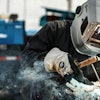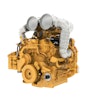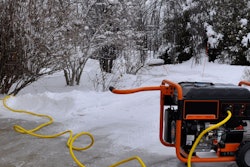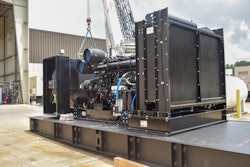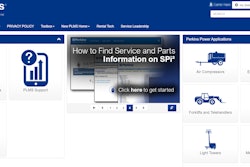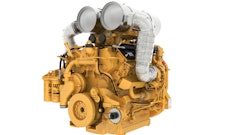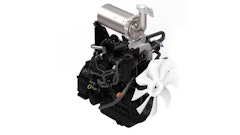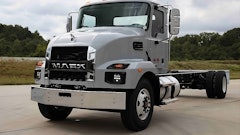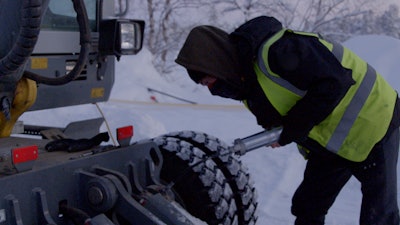
By Julian Wood, Perkins Product Manager for Aftermarket
The best solution to cold weather diesel starting problems is to avoid them by being prepared for cold weather before it happens. Diesel engines are harder to start in cold weather because they depend on high temperatures created by compression to ignite the injected fuel. In fact, it is five times harder to start a diesel engine at 0°F (-17°C) than it is to start one at 80°F (26°C).
The top reasons for this are gelled fuel, cold cylinder walls, and electrical failure. There are, of course, many others, but addressing these is a good place to start when getting ready for winter.
Fuel
Do use winter blended fuel, which is less likely to gel.
Do store full portable fuel cans in a temperature-controlled area to avoid condensation.
Do drain the water from the fuel filter daily, preferably when the machine is shut down for the day, so the water does not sit in the filter overnight.
Don’t forget to drain the water separator on fuel storage tanks every day.
Do fill fuel tanks at the end of the working day, as a full tank doesn’t leave room for water to condense overnight.
Don't neglect the fuel filter, as it’s the most common place for fuel to gel.
Do change the fuel filter before winter weather sets in. That makes it less likely to freeze and avoids the need to do the job in the cold.
Do keep a spare fuel filter and/or water separator on hand. It’s often easier to replace a frozen one than it is to thaw it.
Do park equipment in a sheltered location whenever possible. A heated shelter is best, but simply parking where the wind can’t blow snow and ice into the engine can make a big difference when starting.
Engine Oil
Do switch to a lighter weight engine oil during cold weather. A cold engine needs adequate lubrication especially when it’s started.
Don't use engine oil lighter than the engine manufacturer recommends as it may not provide adequate lubrication when the engine is hot.
Coolant
Do check your coolant regularly with a hydrometer. The glycol in your coolant is there for a reason; it doesn’t boil off and it lowers the freezing temperature of the mixture.
Don't top off the coolant with plain water. Make sure to use a proper water/glycol mix every time. You do not want water to freeze in your engine or radiator.
Do pay attention to temperature gauges and avoid overcooling, which can be caused by long periods of idling or excessive airflow. Overcooling can cause poor combustion leading to white smoke, increased fuel consumption, and inefficient aftertreatment system performance.
Diesel Exhaust Fluid
Don't store diesel exhaust fluid (DEF) at below freezing temperatures. DEF is about 50% water and will freeze.
Don't worry about DEF in the tank on the machine. The system automatically circulates engine coolant to thaw it, so it’s ready for use when the machine warms up.
Cold Engines
Do inspect and, if necessary, change glow plugs and air inlet heaters before cold weather sets in. It’s another job more easily done in warmer temperatures.
Do consider using a block heater if one is installed or installing an aftermarket unit. A warm engine is much easier to start and avoids many of the issues related to cold weather operation.
Don't use starting fluid unless the engine is equipped with a factory installed kit that precisely controls the amount used. Simply spraying starting fluid into the air cleaner carries a high risk of causing a fire or even an explosion.
Electrical Systems
Don't ignore your battery. After a hot summer that encourages corrosion and fluid evaporation, the added strain of cold weather starts can kill a battery. A battery can lose 35% of its power at 32° F (0° C) and as much as 60% at 0° F (-18° C).
Do consider using a battery warmer; either a ‘hot plate’ type that slides under the battery or an “electric blanket” type that wraps around the battery will help the battery retain its charge.
Some Other Considerations
Parasitic Loads
Parasitic loads can include: engine and transmission oil viscosity, fan drive, clutch engagement, hydraulic pump engagement, belt drive systems, and anything else that’s driven by the engine or consumes engine power. Any parasitic load during cranking can be a major contributor to the engines inability to start.
Warm Up Time
Always let a cold engine warm up for at least 5 minutes before putting it to work. That gives the coolant, engine oil, hydraulic oil, and DEF time to come up to operating temperature so they can function efficiently.
Conclusion
Diesel engine builders know their products will be used in virtually every environmental condition found on Earth, and they go to great lengths to test them under extreme conditions. Perkins, for example, has completed billions of hours of engine tests across different environments including cold testing at a Perkins facility in Arjeplog, Sweden, 100 km from the arctic circle where temperatures drop to -49° F (-45°C).
A modern diesel will start and run under extreme conditions with very few issues, but ignoring those issues can be expensive. Proactive preventive action may seem like an extra expense or time spent on something that isn’t a problem now, but it makes economic sense in the long run. The consequences of ignoring winter diesel issues can range from losing all or part of a day’s work to repairing expensive engine damage. Simple steps like keeping your fuel tanks and cans filled, plugging in heaters, using weather-appropriate fuels, strategic equipment parking, and regular battery care can all make a big difference in how winter impacts your business.

